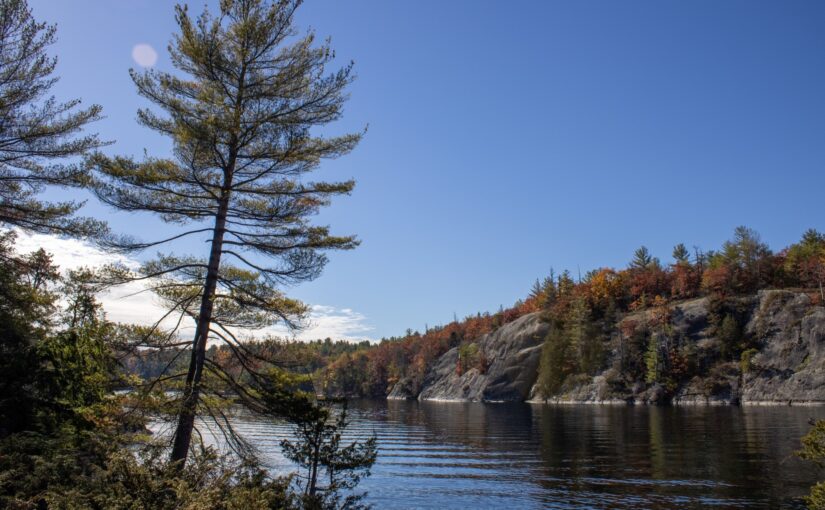Provincial parks are home to some of the most beautiful and diverse landscapes in Ontario.
They protect unique plant and wildlife species, some of which cannot be found anywhere else in the province!
Thanks to the proceeds from our 2021 online holiday store, our staff are hard at work on ecological integrity projects that help these species, like finding Pitch Pine at Charleston Lake Provincial Park.
What’s so special about Pitch Pines?
Pitch Pine is a provincially significant species.
It is considered nationally imperiled and is the only three-needled hard pine native to Canada.
In Ontario, it’s only found on the Frontenac Axis, an extension of the Precambrian Shield where it crosses Leeds County. Charleston Lake falls right in that small region!
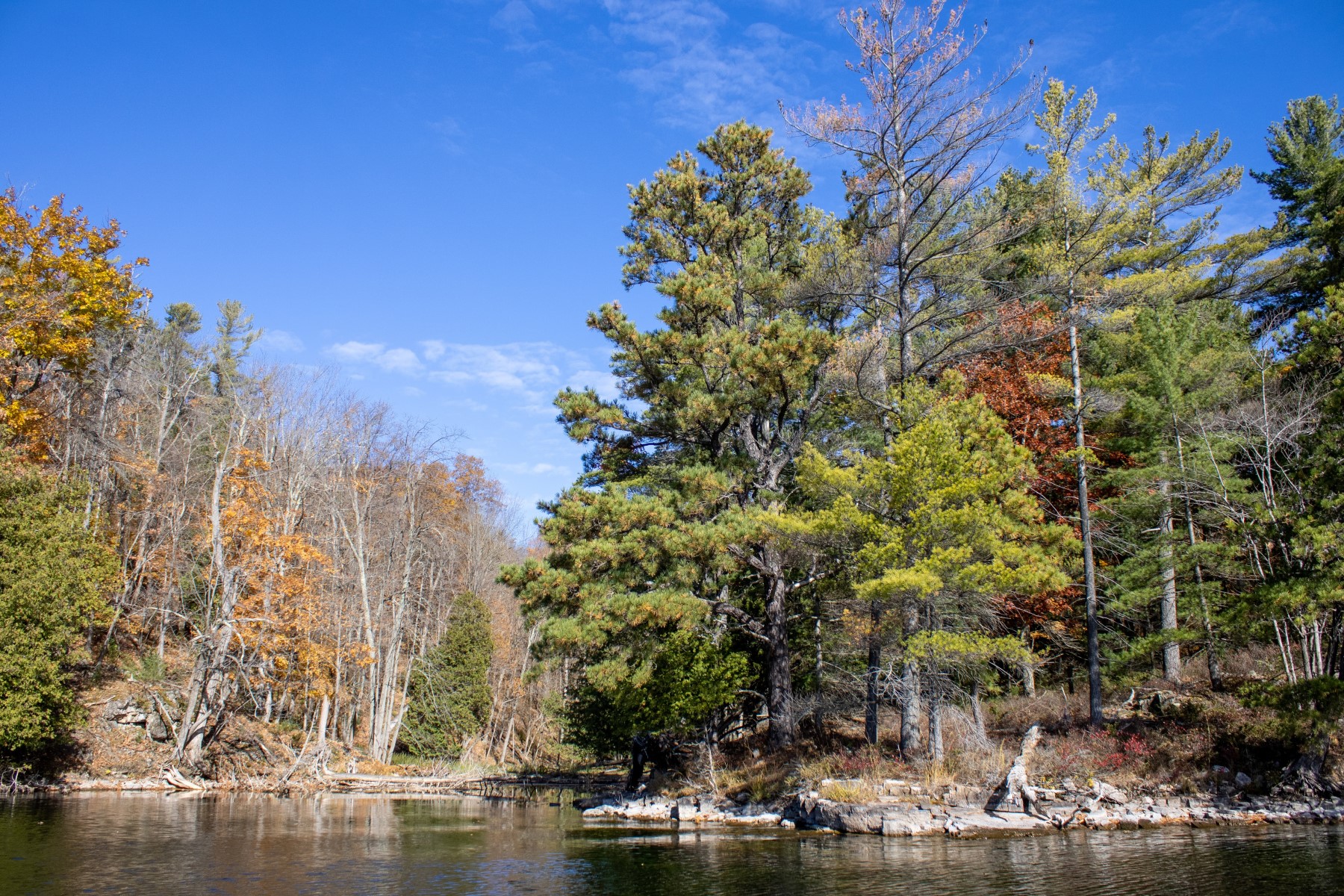
Since this native species is not found anywhere else in Ontario, it’s important that we assess Pitch Pine populations to understand how we can best support this species.
Charleston Lake’s beautiful rocky ridges and islands provide the ideal, but harsh conditions for Pitch Pines to grow. They are shade-intolerant and prefer sandy soil where their deep root system can access water.
What do they look like?
From a distance it can be difficult to distinguish a Pitch Pine from other pine species, but there are a few key things to look for!
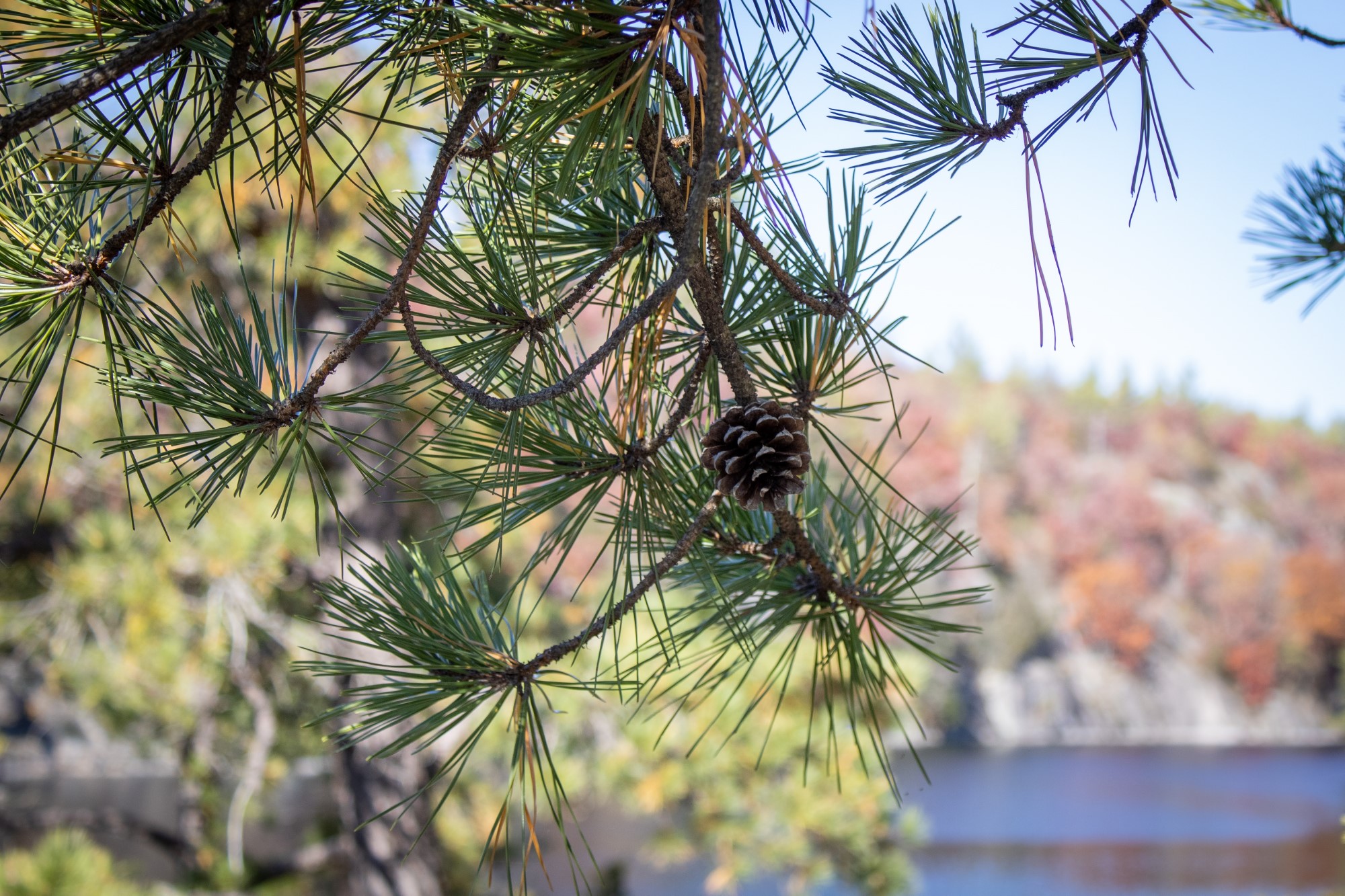
- Look for pine needles in bundles of three that are 7-12 cm long and have a twisting shape to them
- Their bark is reddish brown with long, irregular rectangles
- You’ll find Pitch Pines in sunny spots, where they can grow up to 31 m tall!
- Charleston Lake is the only provincial park where you can find them
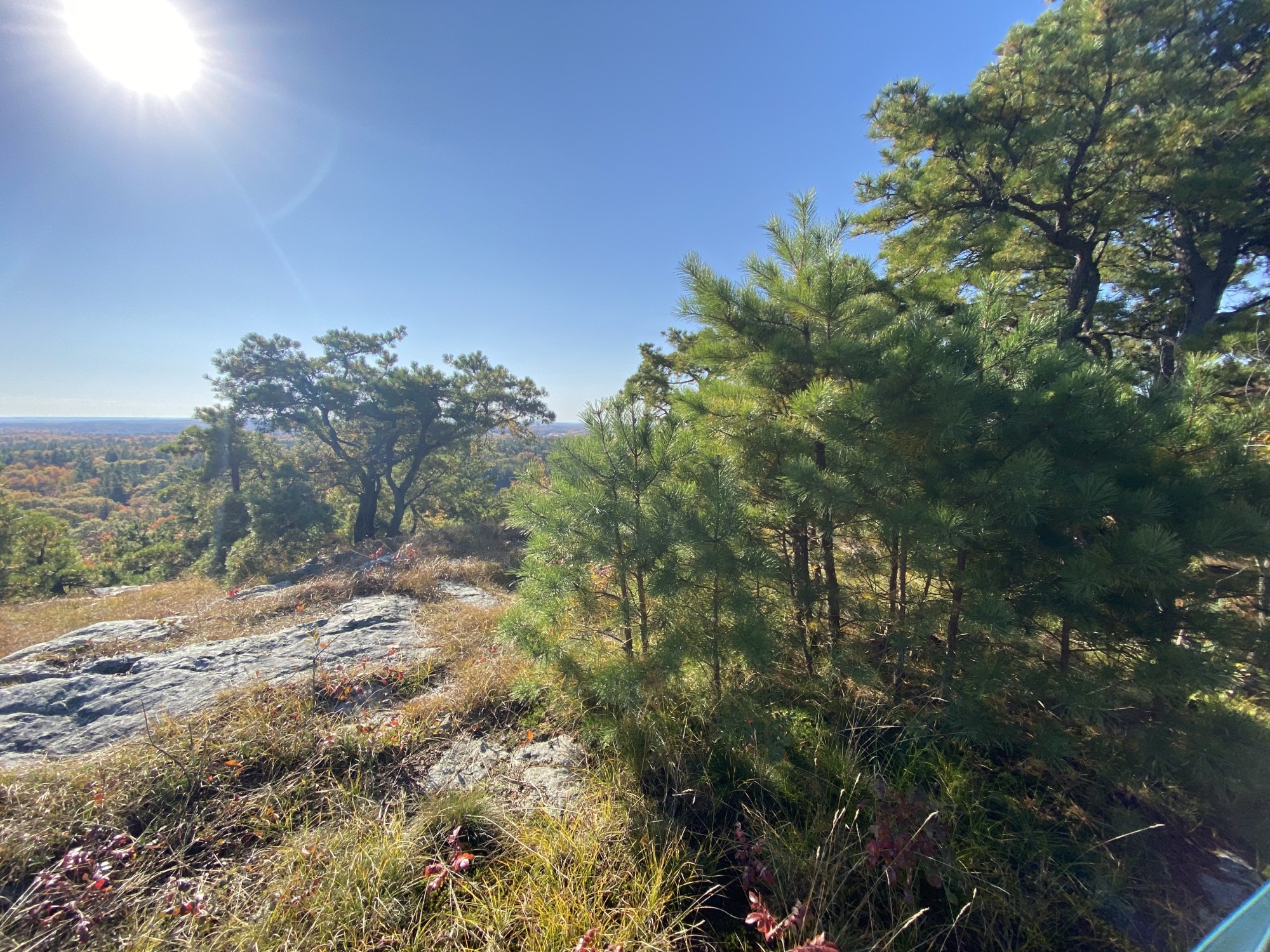
If you see a Pitch Pine during your visit to Charleston Lake, please consider submitting your sighting to iNaturalist so it can be added to our database!
What are park staff doing with Pitch Pines?
This year, park staff continued the assessment work that’s taken place in the region since the 1980s.
The goal of the 2022 Pitch Pine assessment is to survey plots of Pitch Pine that have been observed over the years (1982, 1991, and 2004/05). This survey work involved looking at the numbers and health of the tree populations.
Park Warden Merren Wagar began dedicating her time to this work once the park closed for the season. To do this, she headed out on the water to visit the 16 previously surveyed plots within the park.
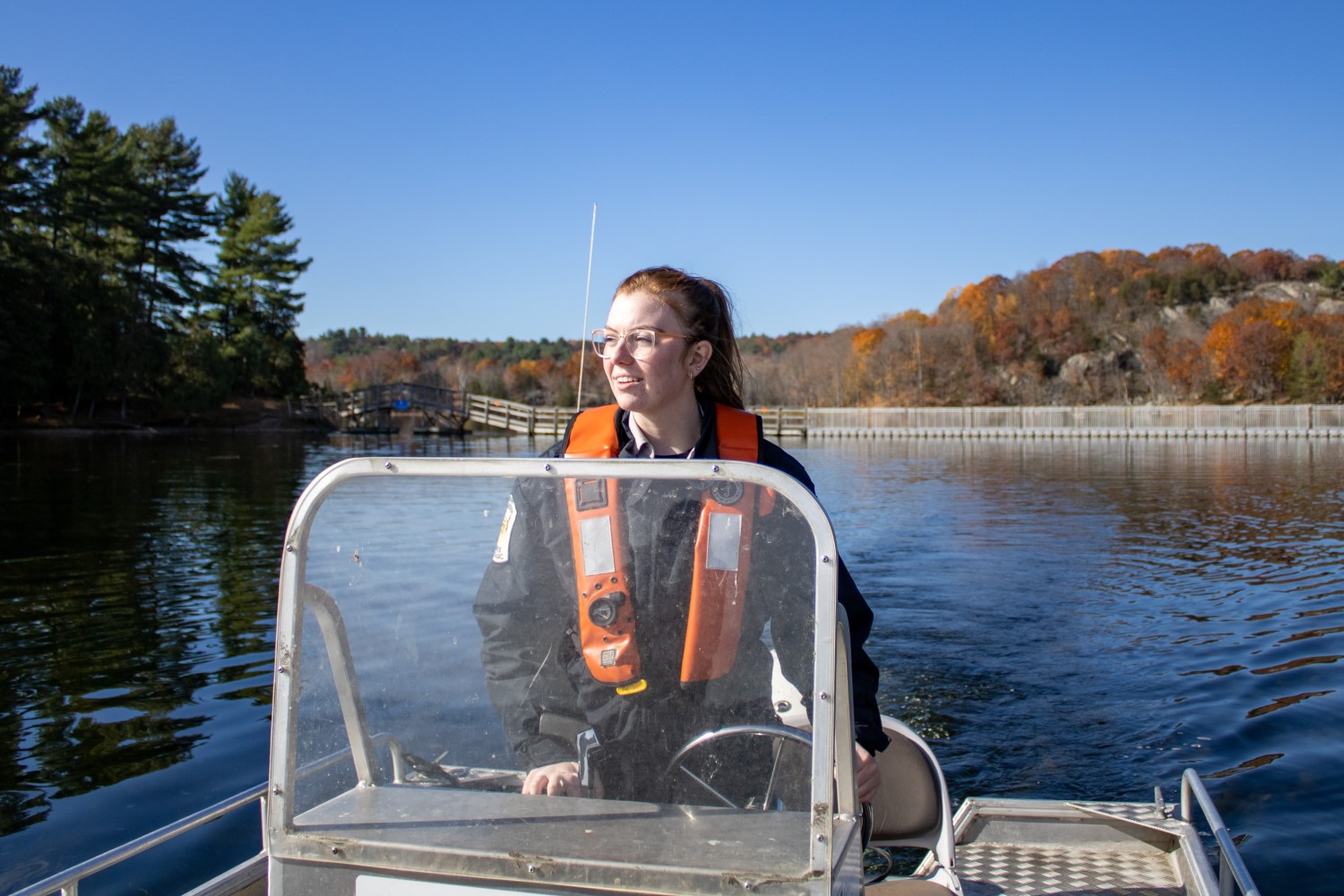
Many Pitch Pines sites can only be accessed by water (and sometimes a lengthy hike through the woods!).
Once on site, Merren takes measurements of already-identified Pitch Pines, looks for saplings, and evaluates the overall health of the trees.
She asks, “Are there cones present on the trees? Or are other species impacting them, such as porcupines or other tree or plant species creating too much shade for them to grow?”
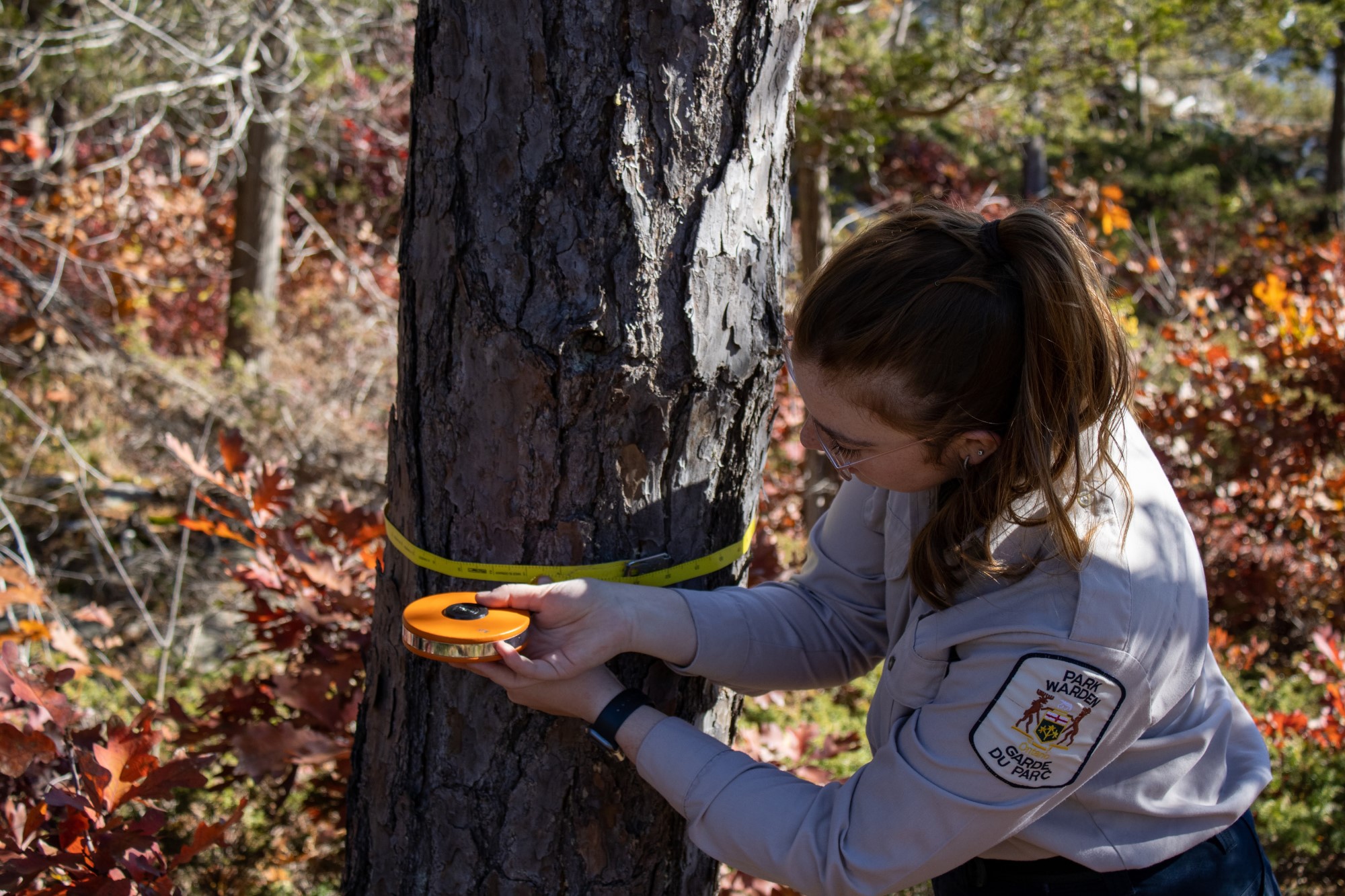
Thanks to digital mapping software ArcGIS, recording Merren’s observation data is easy.
ArcGIS allows Merren to pull up a digital map of the recorded Pitch Pine plots and easily input new information while out in the field!
So how did this year’s assessment go?
When comparing the survey results from this year to previous assessments, it looks like the Pitch Pine population is decreasing slightly, with many of the 16 surveying plots seeing severe porcupine damage to the trees.
Porcupines feed on tree bark, evergreen needles, and twigs, which can impact the health of trees.

On a positive note, there were many saplings counted in this year’s report! This shows that seed germination is happening, and the population of Pitch Pine is growing in some spots.
The ecology team at Ontario Parks will use these findings to decide where management efforts are needed to keep Pitch Pine thriving in the park, and share our findings with partner agencies like Parks Canada and the Natural Heritage Information Centre, who are also monitoring this species.
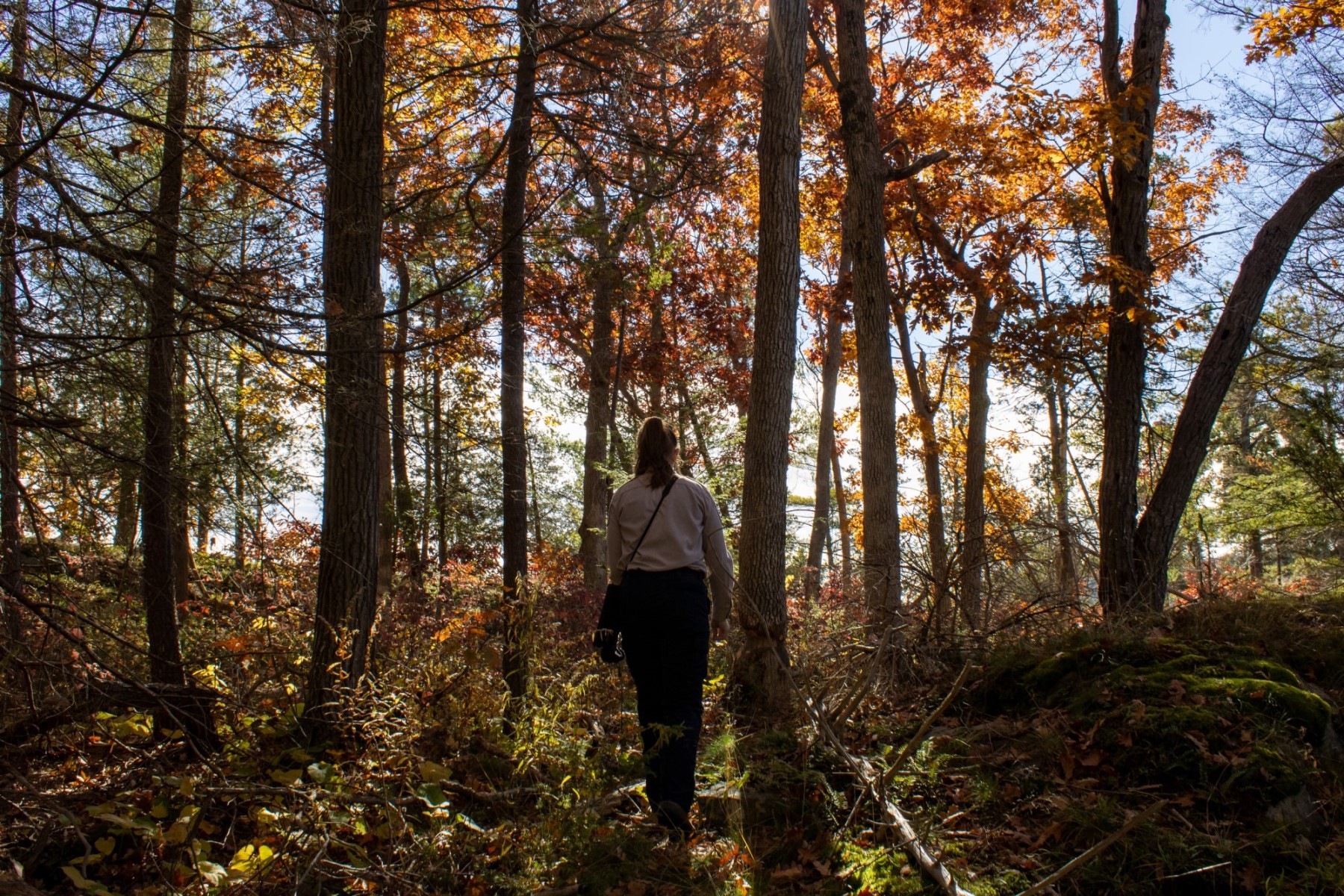
We are so proud of our environmental integrity and species monitoring work, and grateful to the Ontario Parks supporters whose purchases at our 2021 online store funded this work.
Help us do even more in 2023! Put the Ontario Parks online store at the top of your holiday shopping list.
